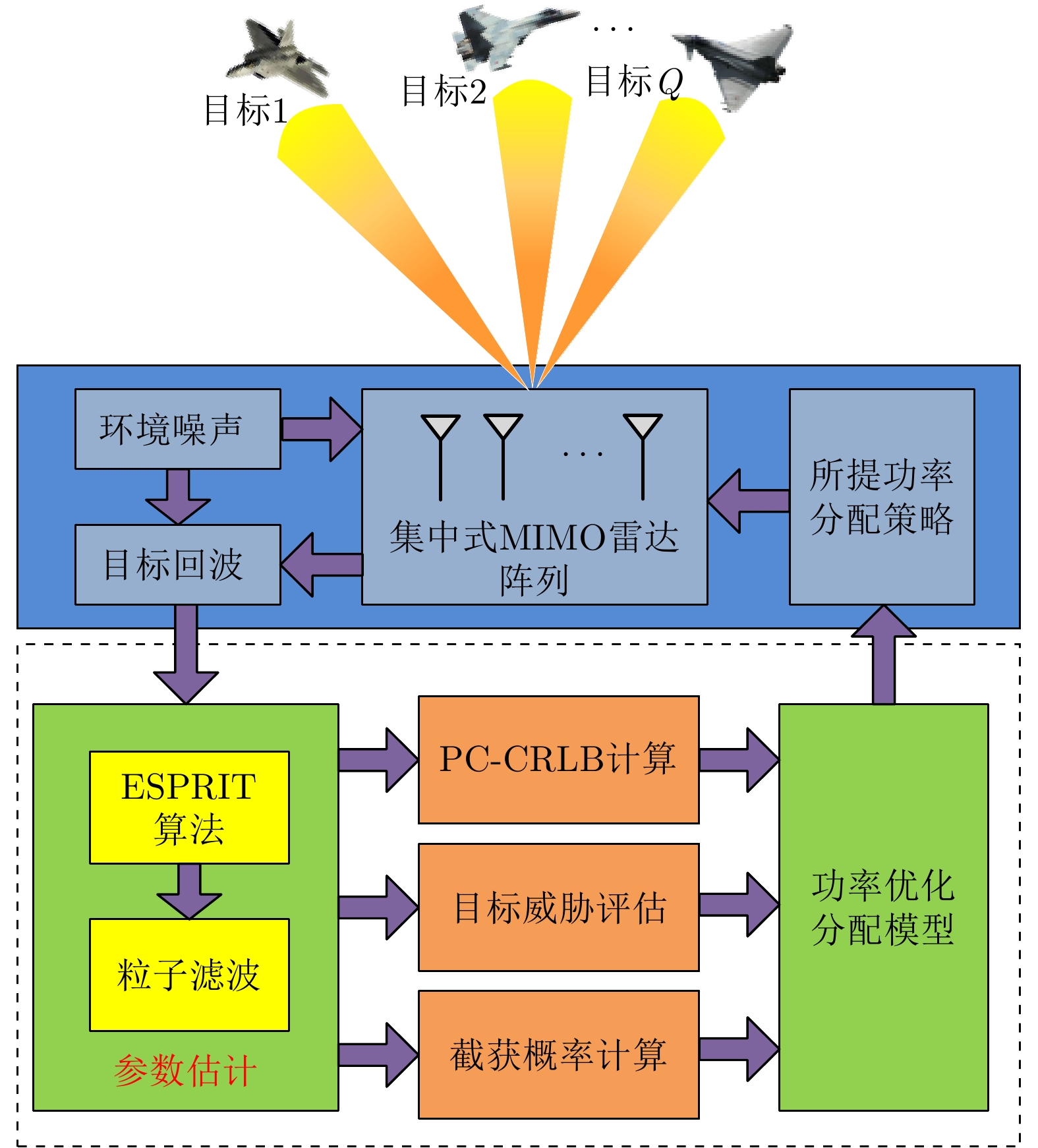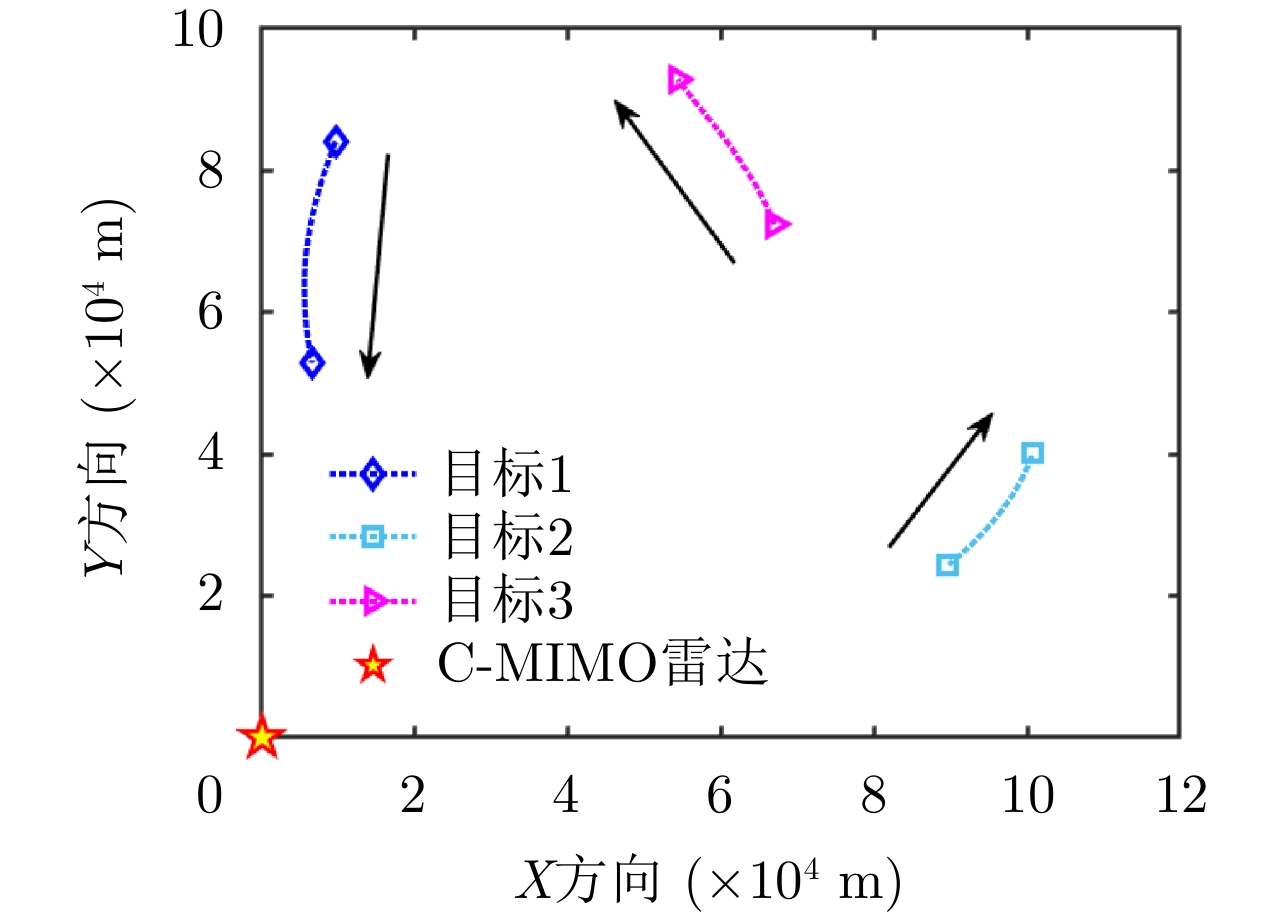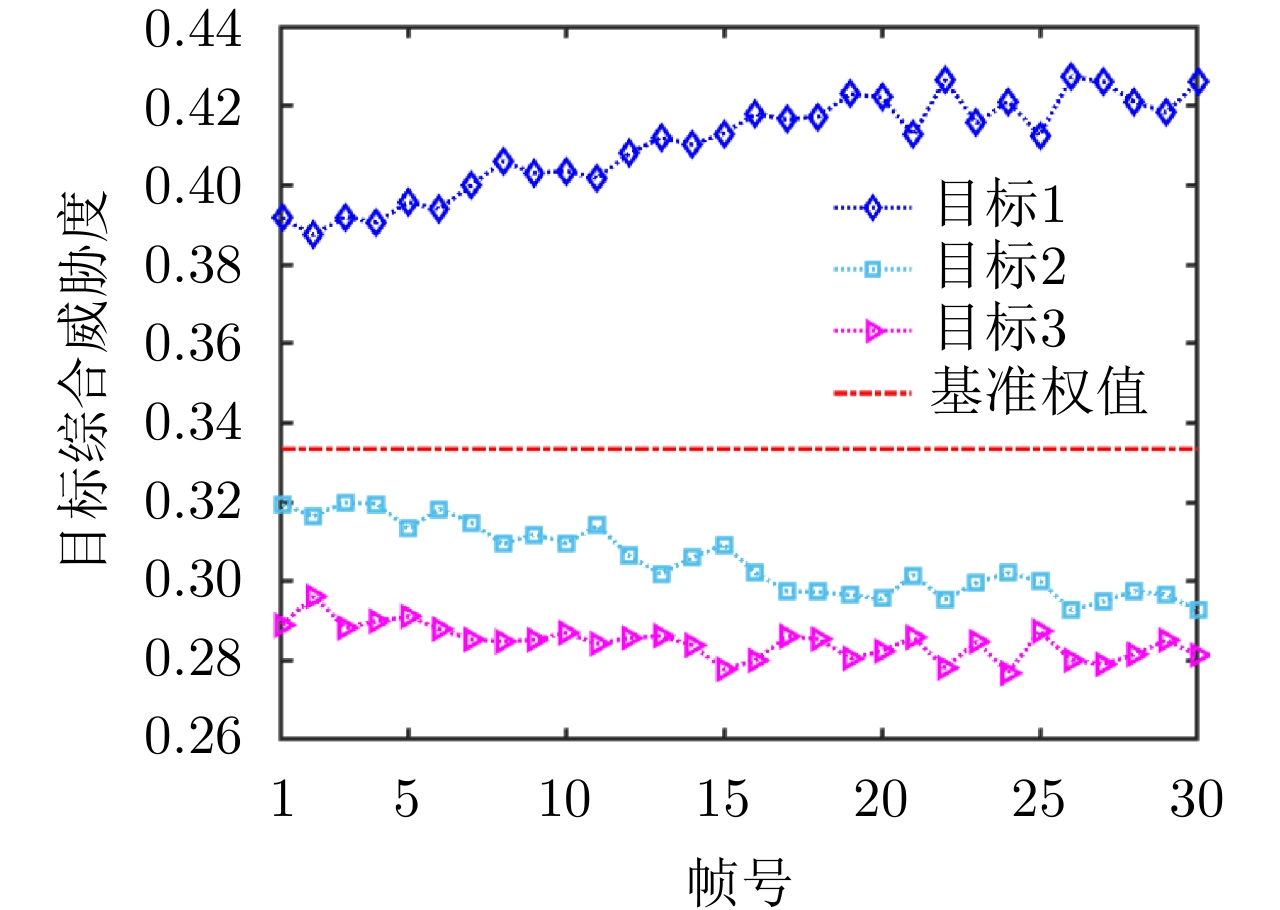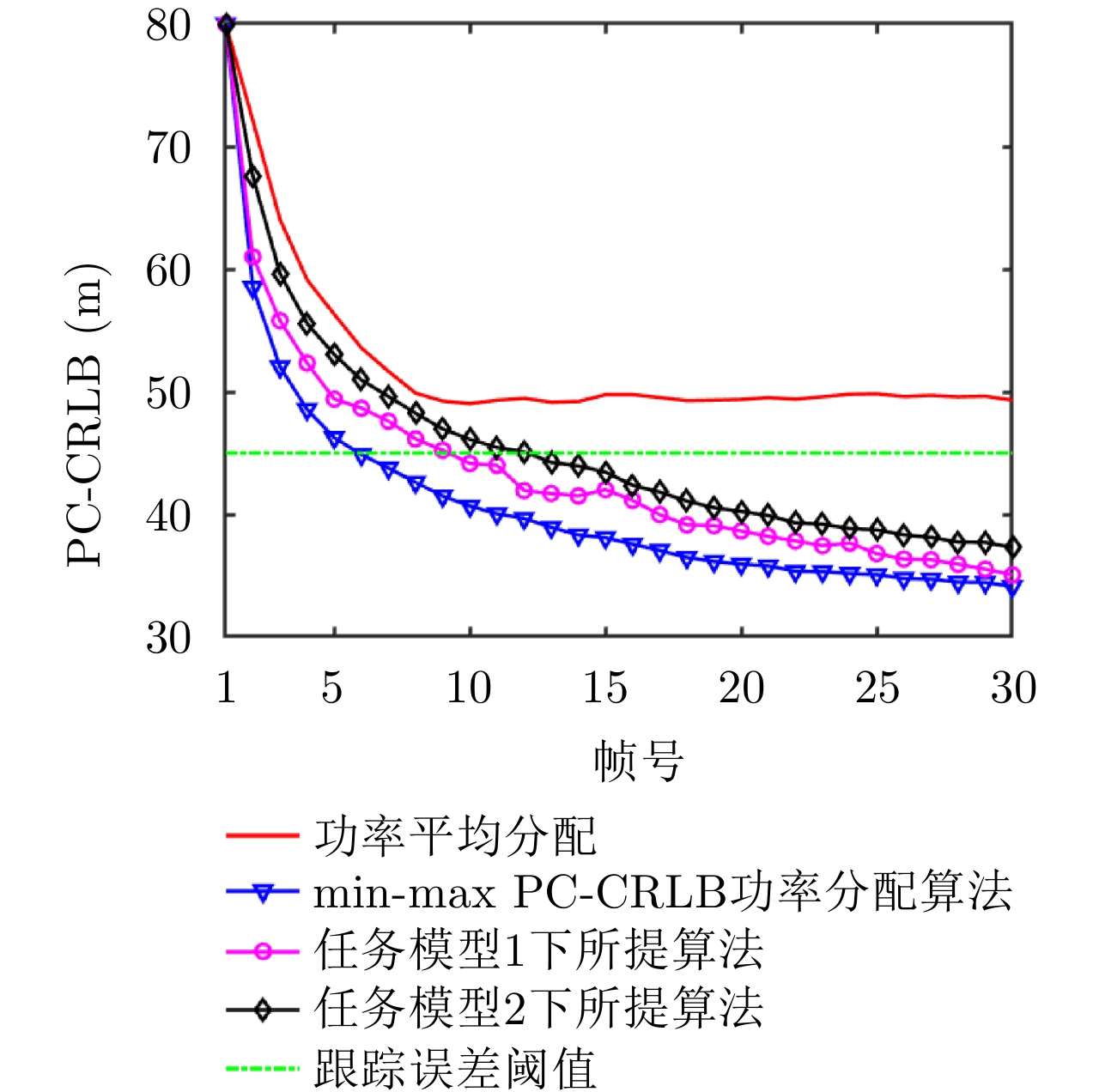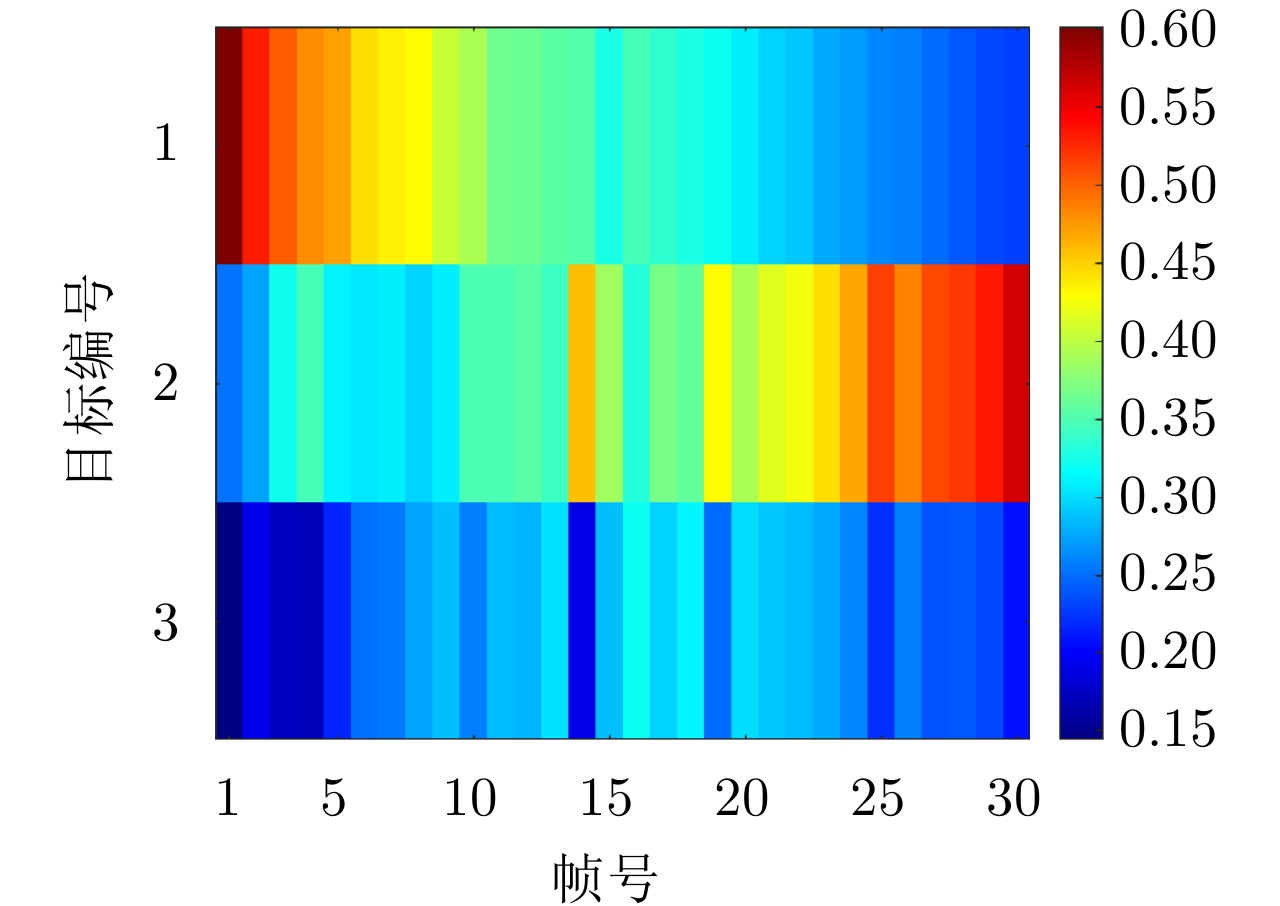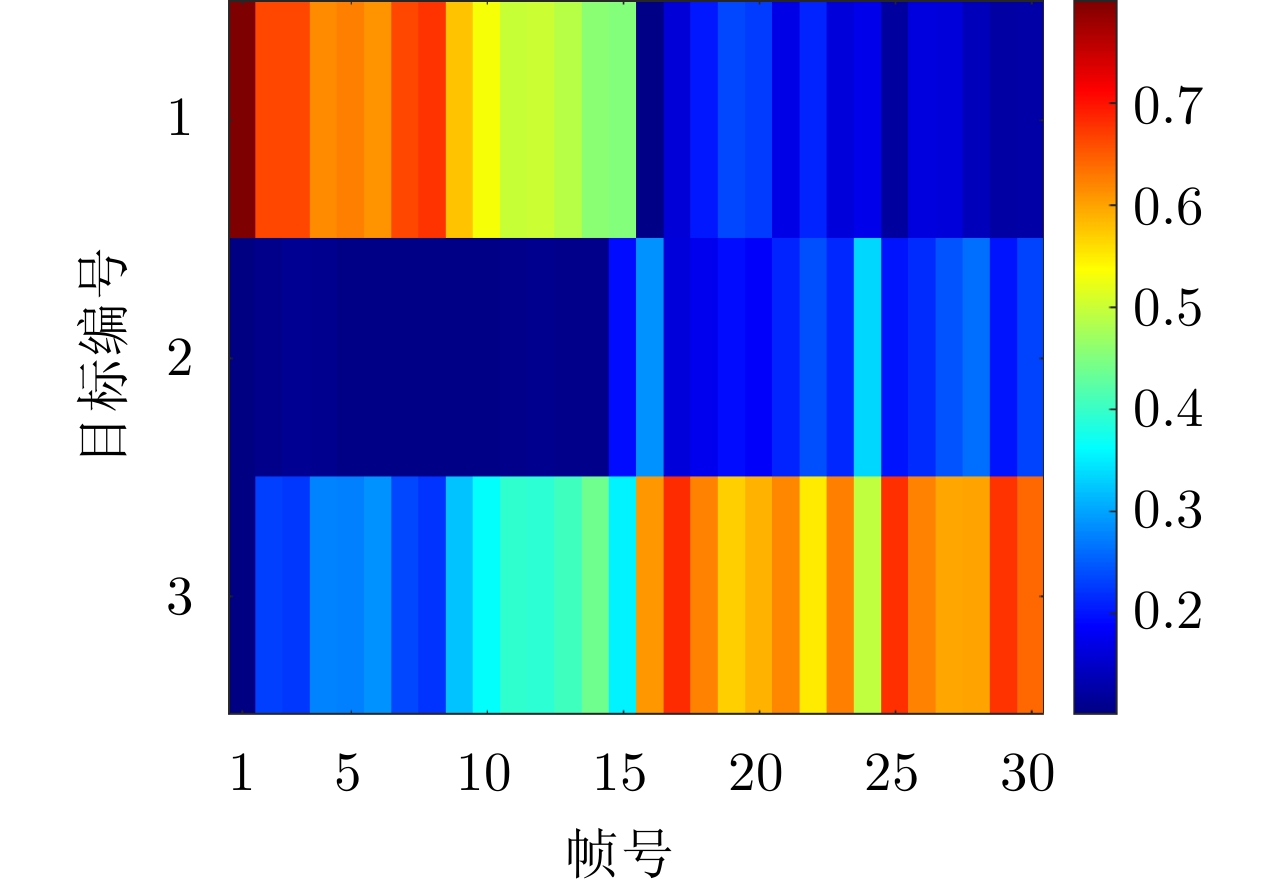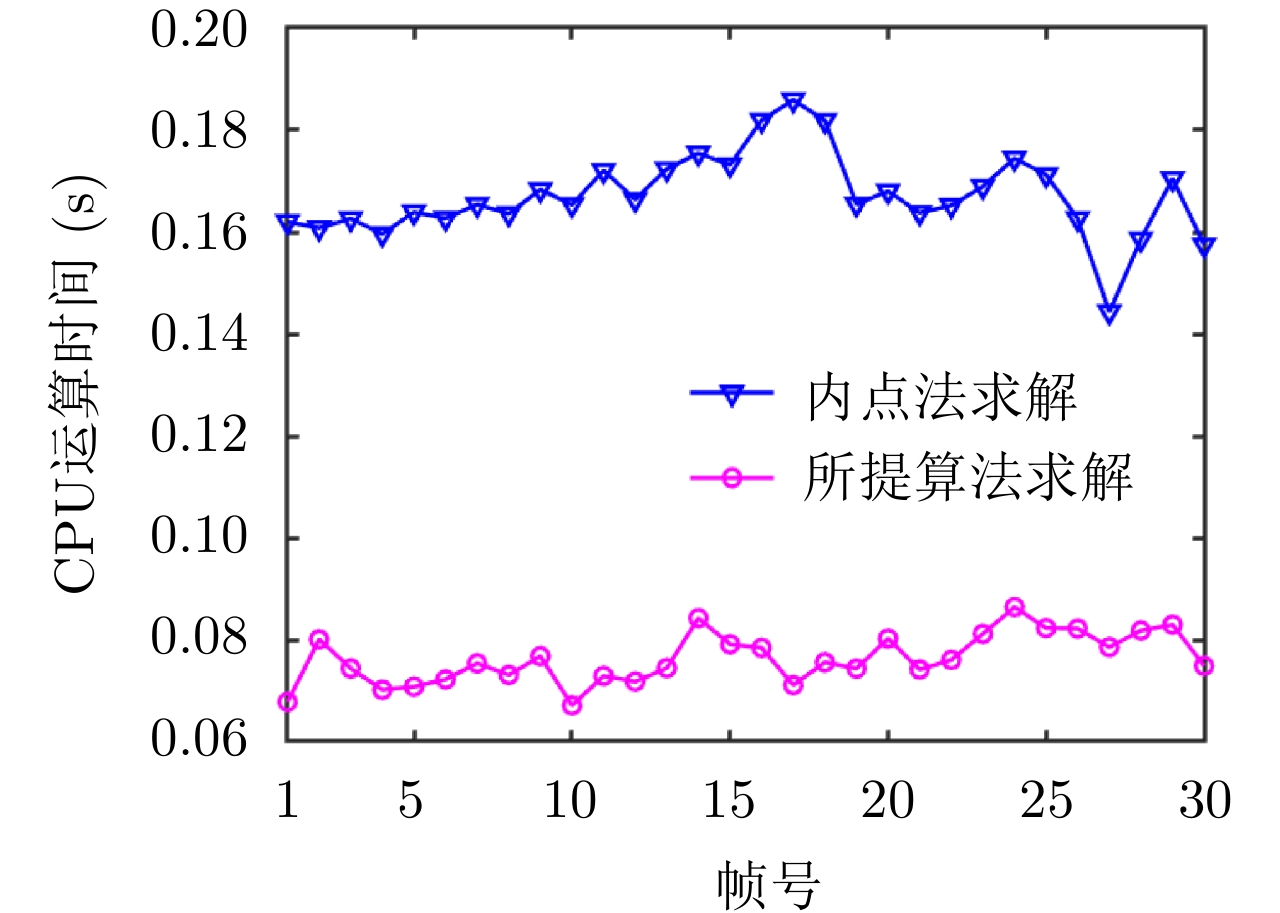| [1] |
何子述, 程子扬, 李军, 等. 集中式MIMO雷达研究综述[J]. 雷达学报, 2022, 11(5): 805–829. doi: 10.12000/JR22128HE Zishu, CHENG Ziyang, LI Jun, et al. A survey of collocated MIMO radar[J]. Journal of Radars, 2022, 11(5): 805–829. doi: 10.12000/JR22128 |
| [2] |
范文, 蔚保国, 陈镜, 等. 基于波形优化和天线位置选择的MIMO雷达波束扫描算法研究[J]. 雷达学报, 2022, 11(4): 530–542. doi: 10.12000/JR22135FAN Wen, YU Baoguo, CHEN Jing, et al. Joint waveform optimization and antenna position selection for MIMO radar beam scanning[J]. Journal of Radars, 2022, 11(4): 530–542. doi: 10.12000/JR22135 |
| [3] |
YAN Junkun, CHEN Lin, LIU Hongwei, et al. Chance constrained based robust multibeam power allocation algorithm for MIMO radar[J]. Acta Electronica Sinica, 2019, 47(6): 1230–1235. doi: 10.3969/j.issn.0372-2112.2019.06.007 |
| [4] |
LI Jian and STOICA P. MIMO radar with colocated antennas[J]. IEEE Signal Processing Magazine, 2007, 24(5): 106–114. doi: 10.1109/MSP.2007.904812 |
| [5] |
韩金旺, 张子敬, 刘军, 等. 基于贝叶斯的高斯杂波背景下MIMO雷达自适应检测算法[J]. 雷达学报, 2019, 8(4): 501–509. doi: 10.12000/JR18090HAN Jinwang, ZHANG Zijing, LIU Jun, et al. Adaptive Bayesian detection for MIMO radar in Gaussian clutter[J]. Journal of Radars, 2019, 8(4): 501–509. doi: 10.12000/JR18090 |
| [6] |
HAYKIN S, ZIA A, XUE Yanbo, et al. Control theoretic approach to tracking radar: First step towards cognition[J]. Digital Signal Processing, 2011, 21(5): 576–585. doi: 10.1016/j.dsp.2011.01.004 |
| [7] |
YAN Junkun, JIAO Hao, PU Wenqiang, et al. Radar sensor network resource allocation for fused target tracking: A brief review[J]. Information Fusion, 2022, 86/87: 104–115. doi: 10.1016/j.inffus.2022.06.009 |
| [8] |
YAN Junkun, LIU Hongwei, JIU Bo, et al. Simultaneous multibeam resource allocation scheme for multiple target tracking[J]. IEEE Transactions on Signal Processing, 2015, 63(12): 3110–3122. doi: 10.1109/TSP.2015.2417504 |
| [9] |
ZHANG Haowei, ZONG Binfeng, and XIE Junwei. Power and bandwidth allocation for multi-target tracking in collocated MIMO radar[J]. IEEE Transactions on Vehicular Technology, 2020, 69(9): 9795–9806. doi: 10.1109/TVT.2020.3002899 |
| [10] |
XIE Mingchi, YI Wei, KIRUBARAJAN T, et al. Joint node selection and power allocation strategy for multitarget tracking in decentralized radar networks[J]. IEEE Transactions on Signal Processing, 2018, 66(3): 729–743. doi: 10.1109/TSP.2017.2777394 |
| [11] |
LI Zhengjie, XIE Junwei, ZHANG Haowei, et al. Joint beam selection and resource allocation for cognitive multiple targets tracking in MIMO radar with collocated antennas[J]. IET Radar, Sonar & Navigation, 2020, 14(12): 2000–2009. doi: 10.1049/iet-rsn.2020.0332 |
| [12] |
YAN Junkun, LIU Hongwei, and BAO Zheng. Power allocation scheme for target tracking in clutter with multiple radar system[J]. Signal Processing, 2018, 144: 453–458. doi: 10.1016/j.sigpro.2017.11.006 |
| [13] |
ZHANG Haowei, LIU Weijian, XIE Junwei, et al. Joint subarray selection and power allocation for cognitive target tracking in large-scale MIMO radar networks[J]. IEEE Systems Journal, 2020, 14(2): 2569–2580. doi: 10.1109/JSYST.2019.2960401 |
| [14] |
YI Wei, YUAN Ye, HOSEINNEZHAD R, et al. Resource scheduling for distributed multi-target tracking in netted colocated MIMO radar systems[J]. IEEE Transactions on Signal Processing, 2020, 68: 1602–1617. doi: 10.1109/TSP.2020.2976587 |
| [15] |
YAN Junkun, ZHANG Peng, DAI Jinhui, et al. Target capacity based simultaneous multibeam power allocation scheme for multiple target tracking application[J]. Signal Processing, 2021, 178: 107794. doi: 10.1016/j.sigpro.2020.107794 |
| [16] |
LI Zhengjie, XIE Junwei, ZHANG Haowei, et al. Joint beam selection and power allocation in cognitive collocated MIMO radar for potential guidance application under oppressive jamming[J]. Digital Signal Processing, 2022, 127: 103579. doi: 10.1016/j.dsp.2022.103579 |
| [17] |
时晨光, 丁琳涛, 汪飞, 等. 面向射频隐身的组网雷达多目标跟踪下射频辐射资源优化分配算法[J]. 电子与信息学报, 2021, 43(3): 539–546. doi: 10.11999/JEIT200636SHI Chenguang, DING Lintao, WANG Fei, et al. Radio frequency stealth-based optimal radio frequency resource allocation algorithm for multiple-target tracking in radar network[J]. Journal of Electronics & Information Technology, 2021, 43(3): 539–546. doi: 10.11999/JEIT200636 |
| [18] |
LU Xiujuan, XU Zhenchang, REN Haiwei, et al. LPI-based resource allocation strategy for target tracking in the moving airborne radar network[C]. 2022 IEEE Radar Conference (RadarConf22), New York City, USA, 2022: 1–6.
|
| [19] |
YUAN Ye, YI Wei, HOSEINNEZHAD R, et al. Robust power allocation for resource-aware multi-target tracking with colocated MIMO radars[J]. IEEE Transactions on Signal Processing, 2021, 69: 443–458. doi: 10.1109/TSP.2020.3047519 |
| [20] |
LI Xi, CHENG Ting, SU Yang, et al. Joint time-space resource allocation and waveform selection for the collocated MIMO radar in multiple targets tracking[J]. Signal Processing, 2020, 176: 107650. doi: 10.1016/j.sigpro.2020.107650 |
| [21] |
HAN Qinghua, PAN Minghai, LONG Weijun, et al. Joint adaptive sampling interval and power allocation for maneuvering target tracking in a multiple opportunistic array radar system[J]. Sensors, 2020, 20(4): 981. doi: 10.3390/s20040981 |
| [22] |
SHI Chenguang, DING Lintao, WANG Fei, et al. Joint target assignment and resource optimization framework for multitarget tracking in phased array radar network[J]. IEEE Systems Journal, 2021, 15(3): 4379–4390. doi: 10.1109/JSYST.2020.3025867 |
| [23] |
SHI Chenguang, WANG Yijie, SALOUS S, et al. Joint transmit resource management and waveform selection strategy for target tracking in distributed phased array radar network[J]. IEEE Transactions on Aerospace and Electronic Systems, 2022, 58(4): 2762–2778. doi: 10.1109/TAES.2021.3138869 |
| [24] |
ZHANG Haowei, XIE Junwei, GE Jiaang, et al. Strong tracking square-root cubature Kalman filter over adaptive current statistical model[J]. Systems Engineering and Electronics, 2019, 41(6): 1186–1194. doi: 10.3969/j.issn.1001-506X.2019.06.03 |
| [25] |
ZHOU Hongren and KUMAR K S P. A ‘current’ statistical model and adaptive algorithm for estimating maneuvering targets[J]. Journal of Guidance, Control, and Dynamics, 1984, 7(5): 596–602. doi: 10.2514/3.19900 |
| [26] |
KHALOOZADEH H and KARSAZ A. Modified input estimation technique for tracking manoeuvring targets[J]. IET Radar, Sonar & Navigation, 2009, 3(1): 30–41. doi: 10.1049/iet-rsn:20080028 |
| [27] |
YANG Yongjian, FAN X, WANG Shengda, et al. A new parameters adaptively adjusting method of current statistical model[C]. 2015 IEEE International Conference on Information and Automation, Lijiang, China, 2015: 1738–1742.
|
| [28] |
ZHANG Haowei, XIE Junwei, GE Jiaang, et al. Adaptive strong tracking square-root cubature Kalman filter for maneuvering aircraft tracking[J]. IEEE Access, 2018, 6: 10052–10061. doi: 10.1109/ACCESS.2018.2808170 |
| [29] |
梁浩, 崔琛, 代林, 等. 基于ESPRIT算法的L型阵列MIMO雷达降维DOA估计[J]. 电子与信息学报, 2015, 37(8): 1828–1835. doi: 10.11999/JEIT141295LIANG Hao, CUI Chen, DAI Lin, et al. Reduced-dimensional DOA estimation based on ESPRIT algorithm in MIMO radar with L-shaped array[J]. Journal of Electronics & Information Technology, 2015, 37(8): 1828–1835. doi: 10.11999/JEIT141295 |
| [30] |
BELL K L, BAKER C J, SMITH G E, et al. Cognitive radar framework for target detection and tracking[J]. IEEE Journal of Selected Topics in Signal Processing, 2015, 9(8): 1427–1439. doi: 10.1109/JSTSP.2015.2465304 |
| [31] |
ZHENG Yujiao, OZDEMIR O, NIU Ruixin, et al. New conditional posterior Cramér-Rao lower bounds for nonlinear sequential Bayesian estimation[J]. IEEE Transactions on Signal Processing, 2012, 60(10): 5549–5556. doi: 10.1109/TSP.2012.2205686 |
| [32] |
ZHANG Haowei, LIU Weijian, ZONG Binfeng, et al. An efficient power allocation strategy for maneuvering target tracking in cognitive MIMO radar[J]. IEEE Transactions on Signal Processing, 2021, 69: 1591–1602. doi: 10.1109/TSP.2020.3047227 |
| [33] |
王祥丽, 易伟, 孔令讲. 基于多目标跟踪的相控阵雷达波束和驻留时间联合分配方法[J]. 雷达学报, 2017, 6(6): 602–610. doi: 10.12000/JR17045WANG Xiangli, YI Wei, and KONG Lingjiang. Joint beam selection and dwell time allocation for multi-target tracking in phased array radar system[J]. Journal of Radars, 2017, 6(6): 602–610. doi: 10.12000/JR17045 |
| [34] |
SHI Xiaobin, GU Hong, SU Weimin, et al. Study of target threat assessment for ground surveillance radar[J]. Acta Armamentarii, 2015, 36(6): 1128–1135. doi: 10.3969/j.issn.1000-1093.2015.06.024 |
| [35] |
LIU Xiuxiang, LEI Zhenya, XIE Yongjun, et al. Simulation research of air stealth targets threat grade[J]. Computer Simulation, 2011, 28(7): 46–49. doi: 10.3969/j.issn.1006-9348.2011.07.013 |
| [36] |
JIANG Chunqi, ZHENG Na’e, ZUO Zong, et al. Antenna selection of distributed MIMO radar on target tracking with key target highlighted[J]. Systems Engineering and Electronics, 2021, 43(10): 2860–2868. doi: 10.12305/j.issn.1001-506X.2021.10.20 |
| [37] |
ZHANG Weiwei, SHI Chenguang, SALOUS S, et al. Convex optimization-based power allocation strategies for target localization in distributed hybrid non-coherent active-passive radar networks[J]. IEEE Transactions on Signal Processing, 2022, 70: 2476–2488. doi: 10.1109/TSP.2022.3173756 |
| [38] |
BOYD S and VANDENBERGHE L. Convex Optimization[M]. Cambridge: Cambridge University Press, 2004: 67–78.
|
| [39] |
GOLUB G H and VAN LOAN C F. Matrix Computations[M]. 3rd ed. Baltimore: The Johns Hopkins University Press, 1996: 509–520.
|
| [40] |
LUSS H and SMITH D R. Resource allocation among competing activities: A lexicographic minimax approach[J]. Operations Research Letters, 1986, 5(5): 227–231. doi: 10.1016/0167-6377(86)90012-X |
| [41] |
BAZARAA M S and SHETTY C M. Nonlinear Programming: Theory and Algorithms[M]. New York: Wiley, 1979: 538–557.
|




 Submit Manuscript
Submit Manuscript Peer Review
Peer Review Editor Work
Editor Work

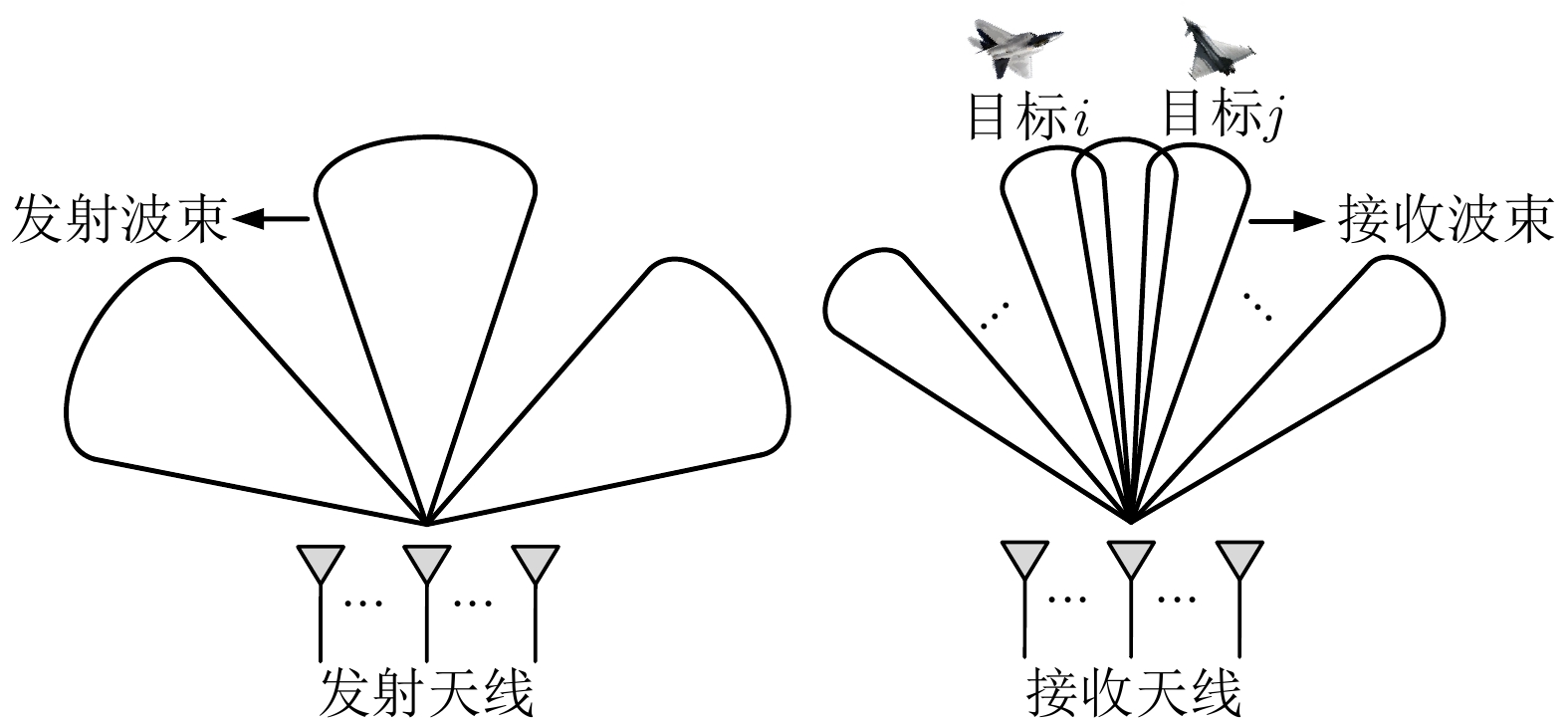



 DownLoad:
DownLoad:
